Hyacinth Bucket of ‘Keeping Up Appearances’ might say, “It’s ‘Bouquet’.” However, this really is about the contents of two buckets, two cans, a bin, and a terracotta pot, without flowers. Most of these items must be processed prior to the end of the rainy season.
1. Agave ovatifolia, whale’s tongue agave bolted and bloomed too soon after installation. It is monocarpic, so died an ugly death while trying to replace itself with fresh new pups. I planned to later select the biggest pup to replace its original. Unfortunately, a gardener who did not know what they are pulled them all with nearby weeds. I scrounged through the debris to find these. Incidentally, I must still find homes for Agave americana pups.
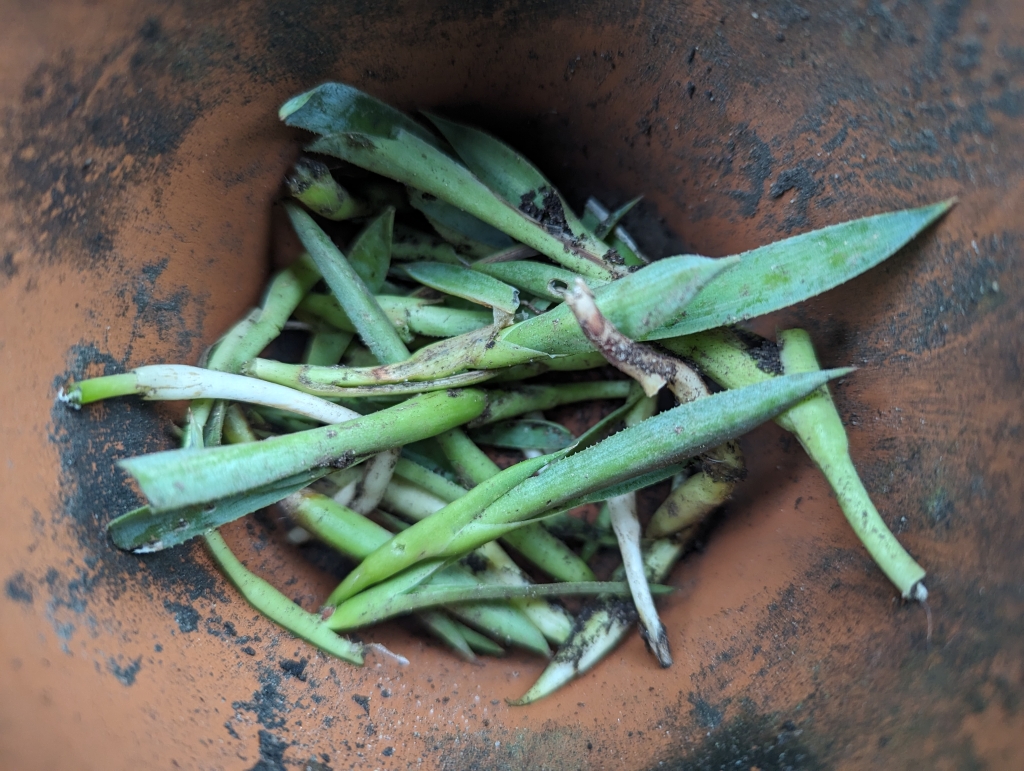
2. Chrysanthemum X morifolium, mum contrarily will not die. It was abandoned after a wedding, but then potted into a landscape as it bloomed again. Removal for replacement as it again finished bloom revealed that each of these many stems is rooted individually.
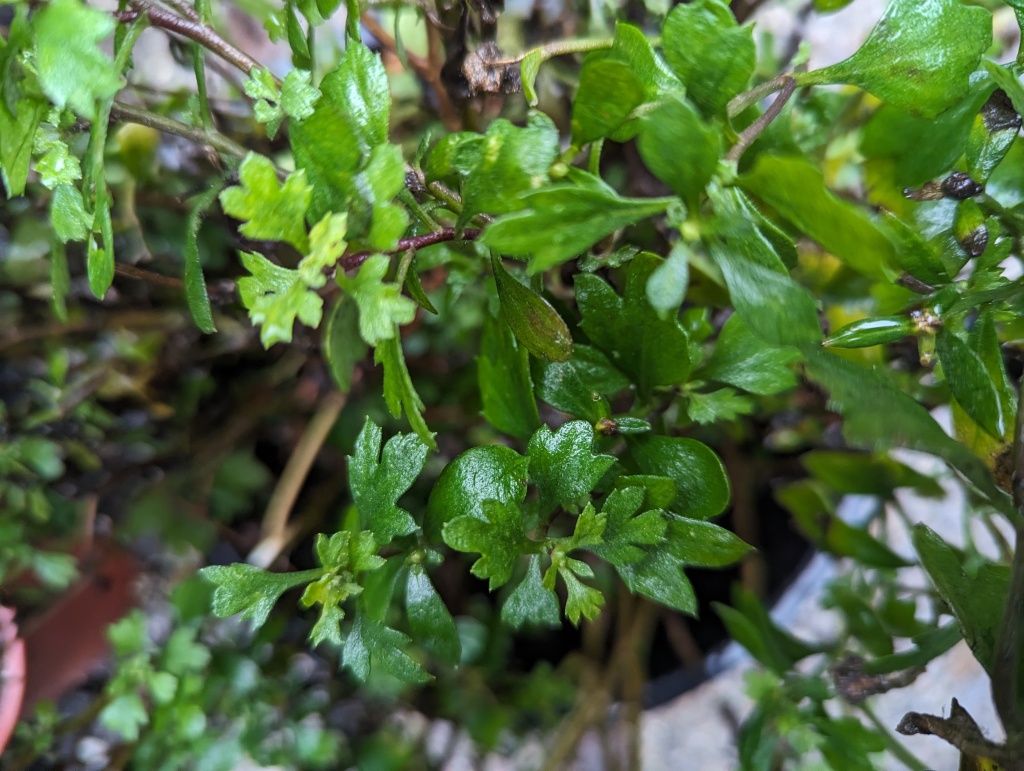
3. Agapanthus orientalis, lily of the Nile is getting to be rather tedious. These shoots are of the same batch that I featured last week, and that I processed more than a month ago. I processed too many, so must now get the leftovers into the ground before winter ends.
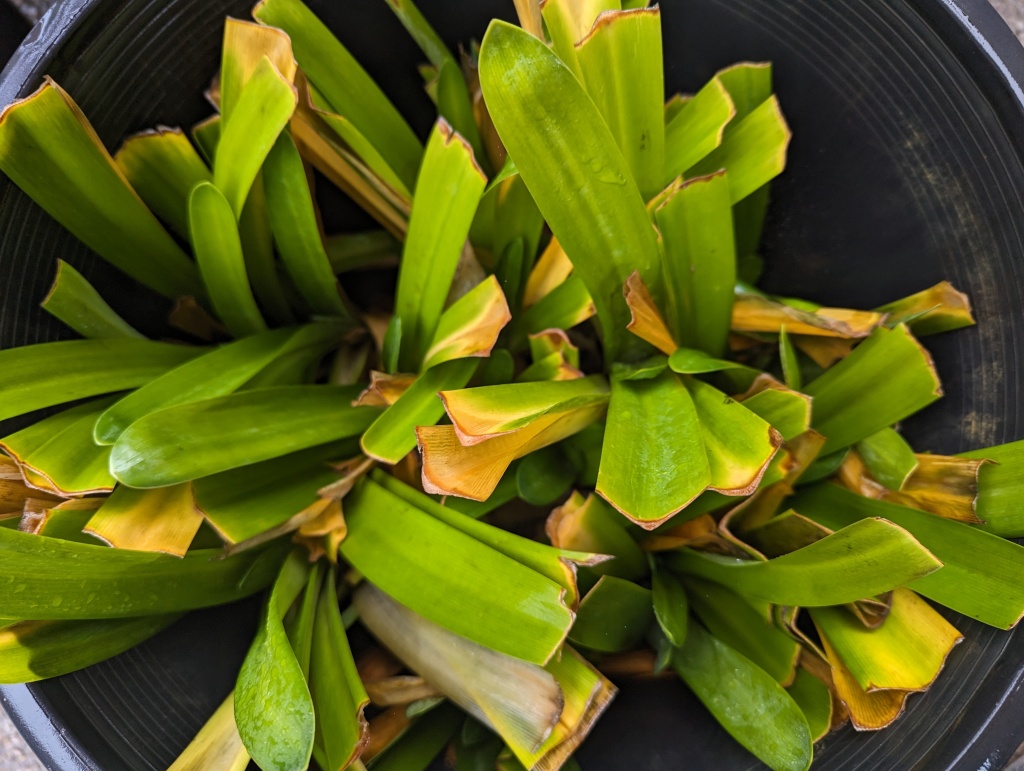
4. Forsythia X intermedia, forsythia will bloom soon, but for the moment, is dormant. I relocated an old specimen that was always in the way. These spare twigs can be forced.
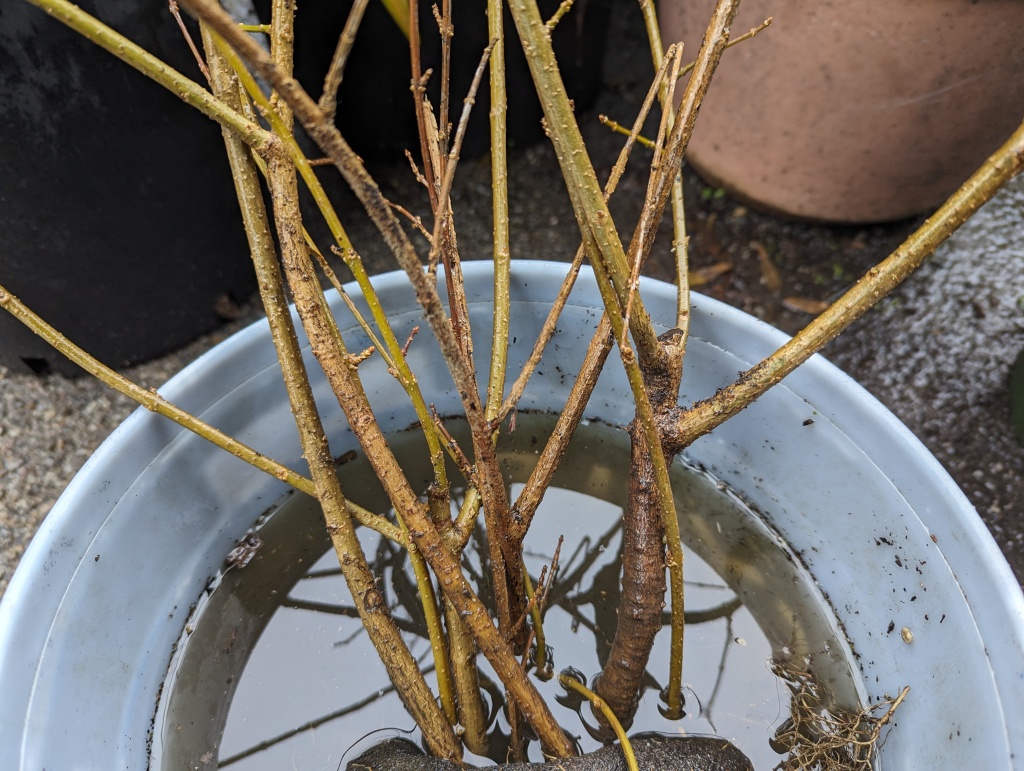
5. Actinidia deliciosa, kiwifruit vines grew easily from a broken bit that I found in a load of debris that someone left here last winter. They are female without pollinators though. These are dormant pruning scraps of its male pollinator, and should grow just as easily.
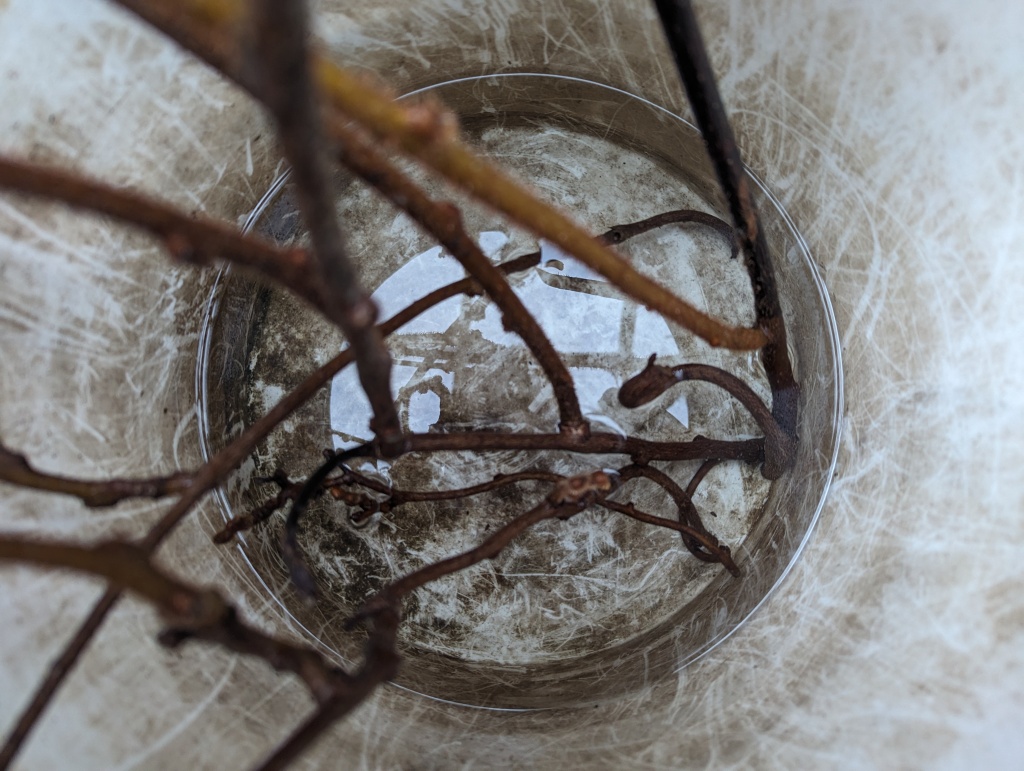
6. Rain was falling yesterday and is forecast to continue lightly through most of Monday.
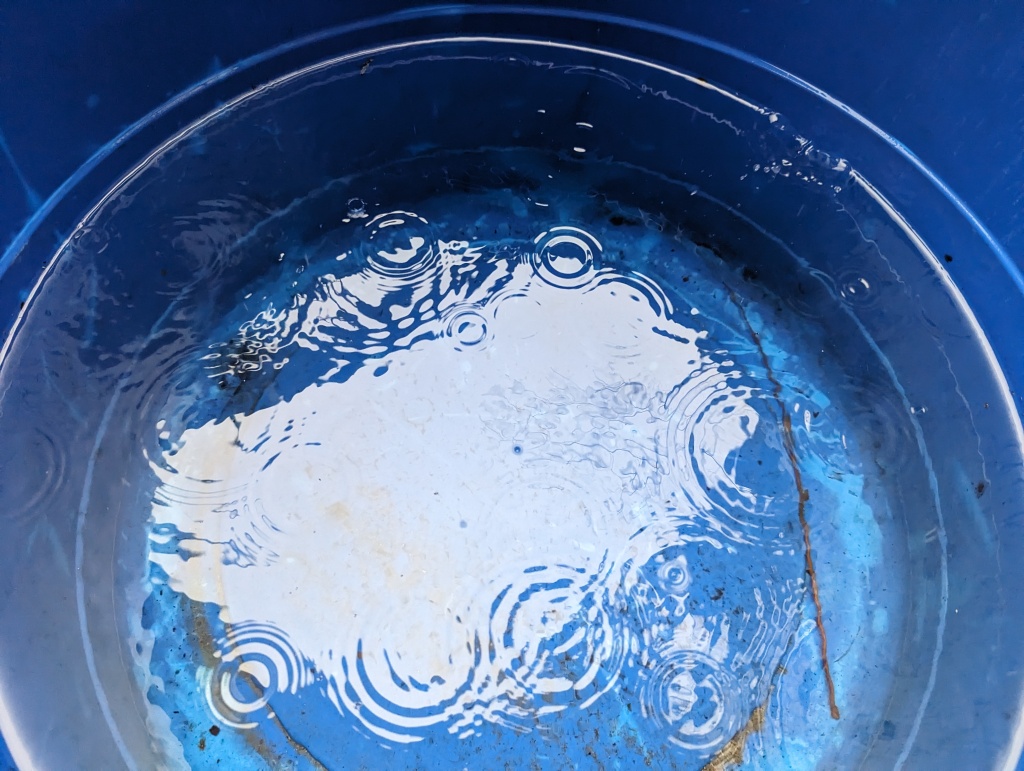
This is the link for Six on Saturday, for anyone else who would like to participate: https://thepropagatorblog.wordpress.com/2017/09/18/six-on-saturday-a-participant-guide/
Memories, here. I used to watch “Keeping Up Appearances” with my mother, who was more like Hyacinth than she liked to admit.
LikeLiked by 1 person
Oh, I so enjoyed Hyacinth, because I so identify with her. I suppose that is how I justify my eccentricity within such a famously superficial and vain society. Friends find my pompousness (or as I like to say, ‘pompousity’) amusing as a mockery of how others behave. For example, my response to those who tell me that I ‘need’ a BMW to live in my neighborhood (which I was born and raised in long before their arrival), is to brag about how totally awesome my 1979 Buick is. Realistically, I enjoyed my Buick more than anyone else in the neighborhood enjoyed their BMWs.
LikeLiked by 1 person
Pure potential! Always exciting to rescue scraps and give them a new life and chance to grow to maturity. I found a severed branch of Forsythia on the driveway last week, and it is in a jar of water in the kitchen. Buds are swelling, so maybe there will be a few flowers soon. Good luck with the pups and the rain, which just keeps coming.
LikeLiked by 1 person
The pineapple sage here was not planned. It all grew from a twig that broke off into the car when I closed the door on it when leaving the parking lot that it inhabited. I felt badly for it, so brought it back and grew it. It is a bad habit, but sometimes works out nicely.
LikeLiked by 1 person
I love pineapple sage, and like most mints it is so easy to grow, and so beautiful in bloom. I have found that sincere love and respect for the plants is the key to success with them. I think it is a terrific habit, since it is my habit as well. Sometimes a leaf or stem only survives a few more days, but often we are rewarded with a beautiful new plant to enjoy, or to give to someone who will. Even throwing out an avocado seed is difficult because I can always see the baby plant inside, ready to grow when given the opportunity.
LikeLiked by 1 person
Do you currently grow pineapple sage? I might have some rooted cuttings later.
LikeLiked by 1 person
Yes, I have a few plants. One has come back reliably for 3-4 years now, and a potted one for at least 2. Salvias tend to have a tough time in our winters, probably because our clay holds too much water in cold weather. But pineapple sage is also offered locally in the spring. My other favorite is Mexican sage, S. leucantha, but that one is a bit tougher to overwinter in our climate, and I never did spot any to buy last spring.
LikeLiked by 1 person
Both are too easy to grow to actually buy. If I want more Mexican blue sage, I merely pull up an old stem with a few newly emerging stems and their roots attached.
LikeLiked by 1 person
That is one of the many things I love about so many members of the mint family. They love to move around and start new plants and it is reasonably easy to do. I wish I could do that here with the Mexican sage- I would have it everywhere.
LikeLiked by 1 person
The native Salvias are not so easy, so it seems odd that the exotic species are. I got one canned specimen of black sage that I am saving for a special landscape. It is not so easy to grow from cuttings.
LikeLiked by 1 person
I think the Salvias, as a group, are exceptionally sensitive to humidity and water in the soil. The amount of moisture seems to be the ‘make or break’ condition for them to thrive. I had great success with S. coccinea and S. elegans at the botanical garden. I also cared for S. leucantha, S. ‘Black and Blue, S. ‘Mystic Spires Blue,’ and a few others. Culinary sage was much harder to keep going because it would mildew, and there are several other species, like silver sage, S. argentea, that I think wouldn’t survive in our wet climate. I love growing Salvias. We just have to do a bit of research in finding ones that can grow with our summer humidity and frequent rains. Can you take cuttings from your black sage to spread around in more than one landscape?
LikeLiked by 1 person
Yes, . . . but it is not easy. They mostly rot before they root. Instead, I find layered stems when I prune overgrown specimens back. I typically put them back into bald spots, but have canned a few for friends. Only one canned specimen is out there now. I am saving it for my own garden. In the future, I might find the wild form. (The sort that inhabits the landscapes is a cultivar.) Although difficult to root as cuttings, layered stems or seedlings are surprisingly resilient. I could pull one up in the wild and plug it back into my own garden. I like black sage because it grows wild everywhere that I have ever lived. The aroma is very familiar, even if slightly different in different climates. My main objection to the Salvia was that some species were a fad while we were in school during the late 1980s. That is why I avoided growing them for so long.
LikeLiked by 1 person
I agree that Salvia is often faddish and over marketed. But it is such a reliable and beautiful plant that I can see why it is marketed so aggressively, particularly for ‘wildlife’ or ‘pollinator’ gardens. When you speak of black sage, do you mean a native S. guarantica? We don’t have that species here, only cultivars of it- usually ‘Black and Blue,’ if I understand which Salvia you are speaking of. It must be so beautiful in your area, with the sages growing in the wild!
LikeLiked by 1 person
Salvias were a fad here because some are native. Not only were the native species overly popular at the time, but exotic species were marketed as native. Besides Salvia greggii, I was not aware that they were faddish elsewhere. The native black sage is Salvia mellifera, and can alternatively be Salvia clevelandii. Neither are as visually appealing as exotic species, although the garden cultivars are more compact and a bit more prolific in bloom. I find them to be olfactorily appealing though. They are so distinctly aromatic when they get warm, even with minimal humidity. Salvia clevelandii in Southern California is a bit more aromatic, but is otherwise very similar. Black sage is mostly gone from the Santa Clara Valley, but still grows wild near here. I do not doubt that it still grows wild on the coastal hills above Montara and San Bruno. I noticed its aroma was exceptionally strong in the hills above Beverly Hills and Hollywood last year, likely as a combination of the two species. It is very common around the Bat Cave.
LikeLiked by 1 person
The black sage is beautiful! I just looked it up by its botanical name. What a lovely native plant! It looks like a cross between Mediterranean culinary sage and the cultivars we plant for ‘pollinators.’ It sounds like its fragrance carries and lingers much like the butterfly ginger lily when in bloom. It is like an echo that catches your attention and makes you pause to consider its source.
LikeLiked by 1 person
Floral fragrance is minimal. I could not even remember what it smells like. I only remember the foliar aroma. That is very distinct.
LikeLiked by 1 person
Well rescued! Lots of lovely plants to come. Rain? Hope no more landslides.
LikeLiked by 1 person
Landslides are unfortunately natural here. It is one of the many risks of living in this region. It does not rain as much here as in other climates, but it sometimes gets torrential on the coastal side of the coastal mountains. We got four inches of rain overnight. For my former neighborhood, that would be about a third of the average annual rainfall.
LikeLike
Always more plants to process in the garden. Are you tired of Agapanthus? I meant to tell you, I planted the Angel Trumpets and they are doing very well.
LikeLiked by 1 person
I enjoy Agapanthus, but wow, these have been excessive. I am not tired of them yet, but could get that way before spring. Were angel’s trumpets questionable because of the soil there? I know you described the situation only recently. I would not have considered them to be too finicky if I had not experience it here. One of ours does not compete well with redwoods. I always thought that they all grow like weeds.
LikeLiked by 1 person
I looked for the Agapanthus that has been hanging around my garden but it has all succumbed to something. I think the soil (sand) is just too porous for it. For the same reason I was concerned about the Angels Trumpets. I put them in the dampest place protected from summer sun. We will see how they do. Do you think it takes four or five years for them to bloom, that is the info I got with the plant?
LikeLiked by 1 person
My single white angel’s trumpet bloomed only a few months after I acquired the cuttings. The single yellow (‘Charles Grimaldi’) was from the previous autumn, but got frosted to the ground over winter, and then grew about six feet tall and bloomed about the same time as the single white angel’s trumpet.
LikeLiked by 1 person
Thank you, that sounds promising.
LikeLiked by 1 person